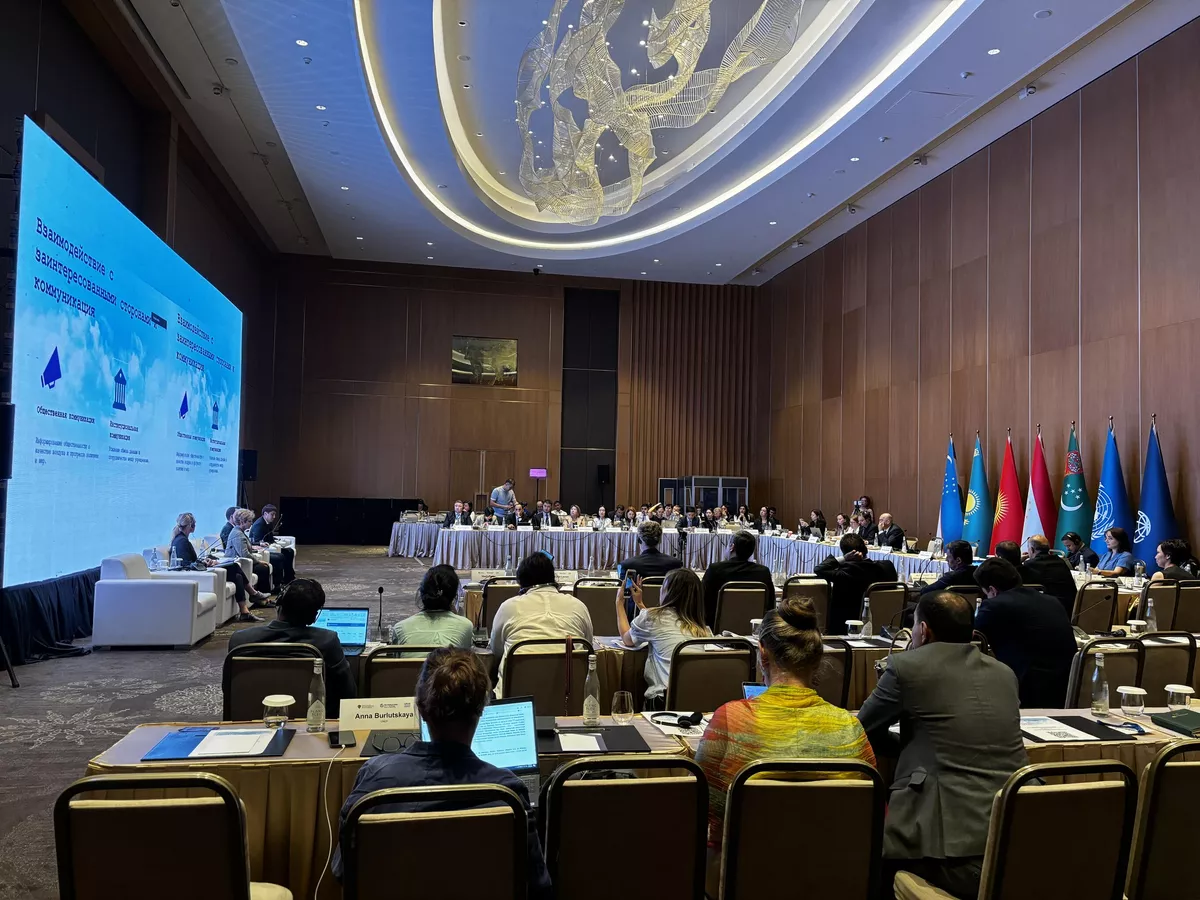Post Views: 40
Air pollution knows no borders. Such an environmental problem that has arisen in one country affects neighboring countries. Therefore, the Central Asian countries are intensifying efforts to develop an effective mechanism for air quality management. Below are the results of the first regional high-level political dialogue “Creating a Future with Clean Air in Central Asia” held in Tashkent, reports a Sputnik Uzbekistan correspondent.
The expert meeting was organized by the Ministry of Ecology, Environmental Protection and Climate Change of the Republic of Uzbekistan, the World Bank and UNEP (United Nations Environment Program). It was attended by experts from Central Asian countries, representatives of international organizations, and environmentalists from Austria, Finland, Germany, India and Poland also shared their experience.
Adopting health-based air quality standards, implementing comprehensive air quality management strategies and policies, introducing advanced air pollution forecasting tools, and joint regional actions to combat transboundary pollution are ways in which Central Asian countries can achieve common goals in reducing air pollution, experts believe.
Harm to health and damage to the economy
According to the UN, more than 7 million people die every year from the effects of air pollution. Environmentalists are sounding the alarm: if effective measures are not taken immediately, then by 2050, mortality from air pollution could increase by 50-100%.
Air pollution is a global problem, experts say. In addition to its impact on human health, it causes huge economic losses, estimated at more than $8 trillion a year.
The largest pollution centers in Central Asia are cities. In addition, as Deputy Minister of Ecology, Environmental Protection and Climate Change of the Republic of Uzbekistan Zhusipbek Kazbekov said, in the Central Asian republics this problem is aggravated by the Aral crisis.
In turn, the World Bank’s international air quality expert Markus Amann explains that, as in other countries, in Central Asia, air quality in urban and rural areas is affected by transboundary pollution caused by increased sand and dust storms.
“Meanwhile, from 50% to 80% of the total PM2.5 content in the air of cities is caused by human economic activity,” the expert clarified.
He also points out that the main health risks (cardiovascular disease, stroke, lung cancer) associated with air pollution are caused by long-term exposure to PM2.5. According to Markus Amann, this is scientifically proven data collected over the past 25 years.
“PM2.5 remain in the atmosphere for about a week, during which time they are carried by the wind over a distance of 1,000 to 2,000 km,” the ecologist explained.
WHO’s ambitious standards
According to the World Air Quality Report 2023 (covering more than 130 countries), air quality in Central Asian cities is among the worst in the world, ahead of the countries of South Asia and the Persian Gulf.
“These facts prove the need for coordinated efforts and exchange of experience in this area, since environmental problems have no borders,” added Zhusipbek Kazbekov.
According to Markus Amann, it is possible to develop general recommendations for all countries, but approaches for one region may not work in another, for example, in Central Asia.
“We have already conducted studies taking into account local data, using them we can significantly improve the efficiency of air quality management. However, there are large gaps in the quality of verified air monitoring data and we need to work in this direction (data collection),” the ecologist added.
Almost all countries in the Pan-European region have air quality standards for the main pollutants. However, we note that the latest WHO standards are very ambitious, so much work remains to be done to bring the standards into compliance and achieve them in all countries, said Ekaterina Perfilieva, regional air quality consultant at the UNEP Subregional Office for Central Asia.
According to UNEP, 124 countries were found to be compliant with ambient air quality standards in 2020, up from 107 countries in 2016. More than one-fifth of all countries are in the process of revising or updating these standards, and nearly one-fifth plan to introduce the standards into law in the near future.
Ekaterina Perfilieva also noted that one of the key sectors for combating air pollution is electricity, heat production and industry. In this case, almost all countries focus on renewable energy sources and energy efficiency, the ecologist noted.
“For Central Asia, the most pressing issues are the transition from coal in the domestic heating sector and increased energy efficiency in buildings,” the expert explained.
In terms of transport, many countries are conducting transport audits, developing urban mobility policies and actively promoting electric cars and electric buses.
Although sand and dust storms are not the main source of PM2.5, it is necessary to continue to create green belts and green urban areas.
Roadmap for Uzbekistan
Experts note Uzbekistan’s efforts to improve air quality and combat environmental pollution at the international level. Meanwhile, unresolved issues remain. As the head of the Department of Atmospheric Air Protection of the Ministry of Ecology of the Republic of Uzbekistan Bakhrom Kholkhodjaev said, Uzbek environmentalists and World Bank experts have developed a roadmap to improve air quality in the country.

First High-Level Regional Political Dialogue “Creating a Clean Air Future in Central Asia”
© Sputnik/Anna Zhelikhovskaya
Its aim is to strengthen overall air quality management, reform and update the legal and policy framework for air quality, and identify potential priority areas for investment in the sector.
“The effectiveness of an air quality management system consists of several interrelated components,” explains Bakhrom Kholkhodjaev. “Monitoring is key because it provides reliable data on the level of air pollution.”
In addition, the roadmap consists of technical components, policies, and investment and financial measures. In particular, technical measures include the establishment of national monitoring and updating of air quality standards.
https://uz.sputniknews.ru/20240619/chistyy-vozdux-strany-sa-borba-44441464.html

